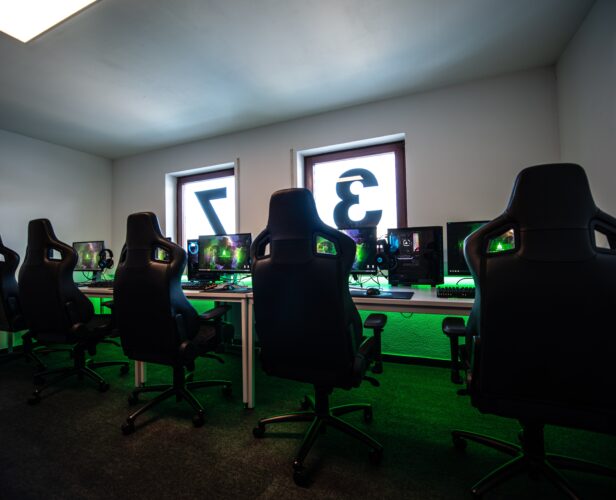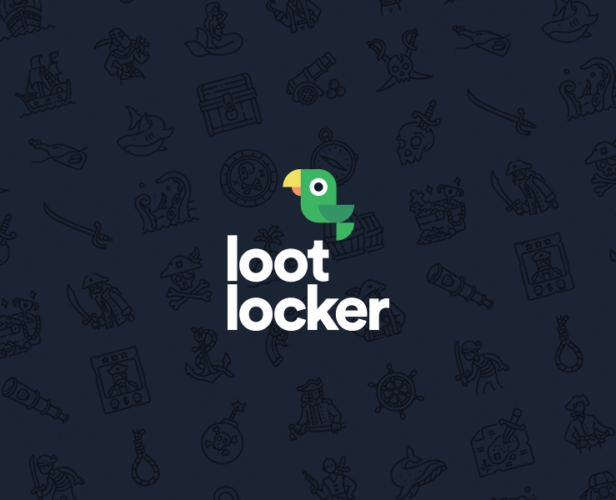Resources > All
Insights and tips about the games industry
Subscribe for gaming insights, industry reports and product updates delivered straight to your inbox.
#Marketing & Publishing
Understanding Player Motivations – And How to Harness Their Power
We all play games for different reasons. Indeed, as individuals our motivations to play games shift continuously. Whether we’re playing to pursue the respite of escapism, or have some competitive urges to sate, we can all get different things from games at different times. That statement will likely feel rather obvious. ‘We play games for different reasons’ is a plainly straightforward assertion. But behind it lies considerable nuance; subtleties games makers can identify and harness to guide the design or their games in pursuit of both commercial and critical success. So what are the leading player motivations, and how can understanding them help your efforts in making and publishing your games? Let’s start by considering the eight most common player motivation, and how they connect with making a game that engages, retains and – hopefully – monetizes. 1. Competition With...
#Guides
Getting Your Game Release Right – A Checklist
Making a game is one thing. An impressive, creative and wonderful thing. But a game really comes to life when it is released to players. Being played is a game’s reason to be – and the vital step in starting to generate revenues that let your studio grow, or allow you to begin work on your next title. As such, getting the release of a game right is about as important as it gets. And in today’s connected era where titles so commonly exist as live, maintained entities, releasing is now about a lot more than making it available for sale. With all that in mind, we’ve built up a checklist of all the things you need to consider before releasing your games. It’s a list that considers quality, performance, marketing, monetisation and more. Bear in mind that many of...
#Mechanics & Features
How to Encourage More Snacking and Less Feasting
In early 2021 some clever bods* at a university wrote a research paper about how individual game mechanics affect player attrition (i.e. how many players your game loses over time). It was called ‘Serious Snacking: A Survival Analysis of how Snacking Mechanics Affect Attrition in a Mobile Serious Game’. While that title might make it sound a bit daunting, the paper has some really useful tips on ways to successfully keep people coming back to a game over a long period of time (called ‘snacking’). And luckily, we’ve done the reading so you don’t have to. Why is snacking good? Some games are designed for long single-play sessions (called ‘feasting’). But for most casual and hypercasual games played on mobile devices, short daily interactions with people coming back regularly are going to be most profitable for developers. So the more...
#Guides
The Game Devs Guide to Push Notifications and Customer Messaging
This article was originally written by OneSignal. You can it out on their blog here. Before OneSignal, our company was a mobile game studio called Hiptic Games. Our experiences at Hiptic helped us see the need for a simpler, more reliable, and more powerful messaging platform to improve user engagement. In many ways, we built OneSignal with game developers in mind. The top 25% of mobile games have an average Day 28 retention of just 4% and the cost of acquiring a user that eventually makes a purchase is over $40 USD. Yet, the vast majority of mobile games still don’t implement basic best practices for improving user engagement and retention through messaging. In this guide, we’ll walk through the four main user-engagement channels that every mobile game studio may want to leverage — Push Notifications, In-App Messaging, Email, and SMS — and...
#Guides
The Hypercasual Playbook: Fast Prototyping
This post and report was originally written by Homa Games. You can check out the original here. Whether you are participating in a jam or just in your daily game creation practice, building a functional, testable prototype ASAP is essential. First, because you want to be able to test your ideas before investing too much time and resources on them. Second, because in the fast-paced, highly competitive Hypercasual world, you don’t want to let the latest trends slip away or see your genius concepts developed by the competition. When it comes to game design, there are elements like core game mechanics and dynamics that need to be there from the beginning, no matter how simple your prototype is. If you are thinking Hypercasual, you also want your games to be satisfying from the start, so the visual part and the...
#Game Design
Simple Tips to Increase Efficiency in Hyper-Casual Game Development
Editor’s note: This article was originally published by our friends at Voodoo. You can check out the original article here. How long have you been working in Unity? Are there simple changes that you could make to your work process to get the most out of your iterations? Whether you’re super experienced or just starting out in hyper-casual game development, taking the time to review your processes can be key to staying efficient and producing great results. A team of our in-house Game Developers recently got together to discuss best practices when working on Unity game prototypes. The result? The Voodoo Dev Manual. Filled with simple tips and tricks to help you work as efficiently as possible and speed up your iterations, this brand new resource is now available for all partner studios on our exclusive e-learning platform . The Voodoo Dev Manual...
#Tool & Product
Ad Revenue Data From Applovin MAX Now in GameAnalytics
A while ago, a bunch of you asked us to add Applovin MAX to the mix of ad networks we integrate with. Well, we’re thrilled to announce that we’ve crossed the finish line, and you can finally analyze your ad revenue from Applovin MAX in your GameAnalytics account. There’s now nothing stopping you from making more informed decisions around your monetization strategy. That’s the biggest news in this update. So if you’re struggling to sit still and want to get started right away, then head to our docs here to grab the integration guide and go go go. But if you fancy digging into the details, then read on. What’s new in GameAnalytics Including the news we mentioned above, here’s what’s changed in GameAnalytics and what you can expect to see next time you log in: We’ve added support for...
#Live Ops
What to Expect When Your Game Turns Into a Viral Hit
Every game developer hopes to see their game hit the top of the charts. The thrill of seeing people play it on the train, glowing reviews in gaming outlets, and your own section on Twitch. (The increased revenue doesn’t hurt, either.) But nobody really prepares you for success. What happens when you get that surge of new players and become so popular that even non-gamers have heard about you? With great success comes great responsibility. The more players you have, the more pressure you’re under to improve the game, add new content, fix bugs and keep the game alive. It’s a tough gig and one game can easily turn into an entire career. And there are quite a few tasks you’ll need to take care of behind the scenes. What goes on behind the scenes? This isn’t an exhaustive list,...
#Guides
Developers Assemble – How to Find and Hire a Game Dev Team
Think of your potential team like the Avengers, but with less spandex (although that’s completely up to you). You need a mix of specific skills and people who get on well as you’re likely to be working together very closely, for some time. And you’re also going to be paying them, so you need to make sure they understand your vision and how you want to deliver it. Don’t worry, help is at hand – here’s our advice on how to find the very best game development superheroes. Before you start recruiting The first thing you’ll need to think about is the type of game you’re building. Ask yourself the following four questions: 1. What technology does my game need? This will give you an idea of what you need to look for when it comes to technical expertise in...
#Marketing & Publishing
7 Deadly Messaging Sins in Mobile Games (And How to Solve Them)
Editor’s note: This article was originally published by the crew at OneSignal. Check out the original article here. You know how powerful player messaging can be. It can improve a game’s experience and enrich competition. It can engage new gamers and win back churned players. Although the potential benefits are compelling, there are also examples of messaging channels detracting from the game experience. As a result, many savvy game developers overlook opportunities to enhance their game experience with messaging because they’re afraid of what might go wrong. Getting mobile messaging right takes some skill and thoughtfulness. We pooled our collective knowledge, along with input from leading mobile development studios, to create a list of seven common messaging mistakes in the gaming industry and how you can avoid them. Sin #1: Leading With an Opt-in Request Imagine you’re a bored commuter. You head...
#Data & Analytics
Sub-Genre Snapshot: Hyper-Casual Games
We break down the top KPIs that Hyper-Casual developers should be aiming for, and reveal a few of the rising superstars that entered the market in 2020.
#Tool & Product
New Realtime Dashboard and GameIntel Launch
You’ve probably heard the news. But if you haven’t, we’re thrilled to share that our brand spanking new mobile intelligence platform is here, GameIntel. And it’s filled to the brim with powerful features and data. But that’s just one of the key updates we have for you. We’ve also introduced our new Real-time dashboard into the mix, ready for you to get started and try it out. But before you do, let’s go over the details and what this means for you. (You can check out our previous update here if you need to get up to speed with everything else.) Here’s what’s new: 1. Test our new Real-time dashboard with User ID filtering We’ve redesigned the Realtime dashboard in our GameAnalytics tool. You’ll find it under the GA Labs section on the left menu. And we’ve also added a...
#Ads & Monetization
CPI or CTR? How to Best Measure Your Game’s Marketability
Editor’s note: This article was originally published by Sara De Vries, Content Creator at Coda. You can find the original article here. When it comes to understanding the potential success of your prototype, market testing is the best way to accurately measure a user’s reception to your game. Most rapid market testing is conducted on social media platforms such as Instagram and Facebook, as they allow you to test the marketability of your game in both an economic and efficient way. The types of campaigns or tests on these platforms can range from tracking traffic to engagement, and from them you can calculate important KPIs such as Click-through-rate (CTR) and Cost-per-install (CPI). A CPI or a CTR test are two different types of tests and both have pros and cons worth considering for your particular stage of development. Keep reading...
#Editor's pick
2023 Roblox report: Behind the data with GameAnalytics
Download a comprehensive report of Roblox player behavior and game performance based on GameAnalytics data from 2023. This report highlights critical benchmarks and insights to help Roblox creators optimize their games. What’s inside? Devices analysis Players’ daily session frequency Average revenue spent per user Session length and count benchmarks Retention benchmarks Revenue benchmarks
#Editor's pick
The Game Developer’s Handbook to Mastering Data Solutions
Data is the key to success in the ever-evolving landscape of game development. Explore this guide to transform your data into insights using our turn-key data solutions. What’s inside? Our comprehensive guide explores cost-saving strategies and real-world applications for advanced use cases. Learn how to seamlessly integrate data sources, unlock detailed player insights with Player Warehouse, access real-time data with Raw Export, and ensure data privacy compliance.
#Case study
Developing a #1 VR MMO: Ramen VR’s Journey with GameAnalytics
Discover how Ramen VR used data-driven game development to launch "Zenith: The Last City", which became the #1 bestselling game all major VR platforms—including Meta Quest/Rift, Steam and PlayStation VR.
#Editor's pick
Using AI to Supercharge Your Game Art Design
Discover how tweaking AI tool settings can help you generate varied art styles, produce better concepts, and speed up the process from prototype to final design. With AI on your team, creating unique game art has never been easier or faster.
#Editor's pick
Event Design & Tracking Guide for GameAnalytics
Learn how to create an adaptable tracking plan, enabling you to unlock richer insights and maximize the value of your data within GameAnalytics.
#Editor's pick
From Zero to Hero: Tracking Key Success Pillars in Gaming
Our COO, Allison, recently joined Mobvista for the first episode of their "From Zero to Hero" video series. Watch the video today for a detailed overview into tracking three essential pillars of gaming success: Acquisition, Engagement, and Monetization.
#Editor's pick
How studios use DataSuite to find hit games
Learn how successful publishers evaluate hundreds of games per month, to find the next hit game.
#Editor's pick
Among Us VR dev talks about how to create immersive worlds
VR is all about immersion. It’s about allowing players to lose themselves in more than just a game, but a new world. You have to build VR experiences the right way to make this happen. This goal is always top-of-mind for Schell Games. In this interview, we spoke to Schell Games’ Vice President of Product, Charlie Amis, to learn their story. “For VR, you want to make the player feel like they’re actually in the world you’ve created. This isn’t as true or a high priority in PC and console games. If people start to lose that sense of presence and immersion, then a lot of the reason they put the headset on is hurt. They want to go to another world or be someone new. So you need to help them feel like they’re really there and really that...
#Editor's pick
GameAnalytics H1 Update: New Product Improvements!
It’s been a busy time since February, when the largest update in GameAnalytics history was launched. Read on for more information about what’s changed recently, and new functionality coming to the platform very soon.
#Case study
How TapNation uses DataSuite to increase the LTV of 19 hit games by 50% in only 6 months
Smashing obstacles with Giant Rush While they’ve seen huge improvements using DataSuite across their portfolio, one game stands out in particular: Giant Rush. (And not just because the character is huge.) The title has now reached over 140 million downloads. And, through a series of A/B tests and insights from the data they collected, they’ve been able to increase the LTV by a whopping 200% over six months for this specific title. “It’s because we A/B test every day,” Philippe Grazina from TapNation says. “We ask questions like: When are players leaving the game? For example, the boss in Giant Rush. If we spot that they’re leaving at the same point every time, we know we need to make a change. Small details like that really help.” Through these granular insights, TapNation can iterate and improve on their game step...
#Editor's pick
How to Build a Data Warehouse for Games from Scratch
Over our last couple of blogs around data warehouses, we’ve explained how they let you analyze data from across your portfolio and look at what insights you can gather from them. Now, we’ll dive into how to build a data warehouse. What steps do you need to take and what resources will you need? To figure this out, we’ve rounded up the costs, steps, and tools we think you’ll need to get started. Please note, that we haven’t included the cost of running an engineering department (which you’ll need), which can end up being a lot of $$$. What do I need to get started? Before you start, you’ll need to ensure you have the right people. You’ll likely need a software or data engineer, and perhaps an architect or DevOps engineer. You’ll also need to budget for tools like...

























